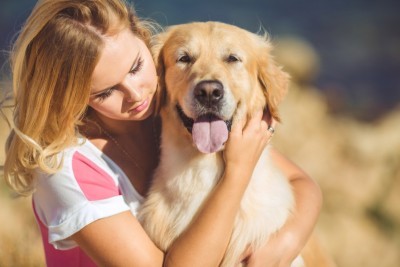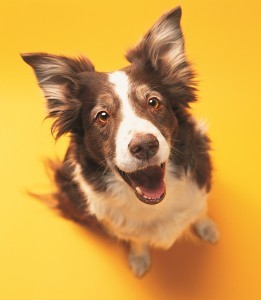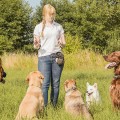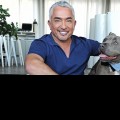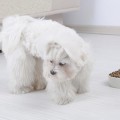Puppy Training Tips - Celebrity Pet Training Experts
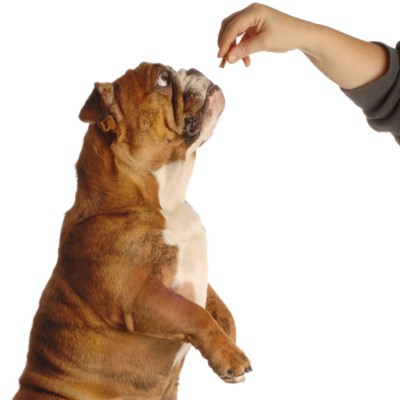
Aah, the joys of puppyhood: sleepless nights, soiled carpets, chewed shoes and other seemingly endless challenges to one’s sanity. I’m eternally grateful that the powers having influence over canine train-ability were gracious with my dog, Cardiff, who has evolved into well behaved adult.
Of course, Cardiff did not train himself to acclimate to my imposed standards of appropriate conduct in a human run world. “Puppy Cardiff” and I attended months of clicker training classes and we currently engage in ongoing positive reinforcement exercises. He and millions of other domesticated canines require consistent discipline to maintain composure in high and low stimulus environments.
Many of my clients seek advice on addressing canine and feline behavior problems (did you catch me on season two of Animal Planet’s My Cat From Hell, featuring “Stella” and “Polly”?), so I integrate western and eastern veterinary perspectives to explore potential underlying medical causes and recommend a holistic blend of treatment. Despite my experience, I don’t market myself as a behaviorist and I feel like a fledgling in the vast realm of experts who have undertaken companion animal training as their profession.
Therefore, to provide my petMD readers with a variety of perspectives, I sought advice from my circle of renowned pet trainers on the best means of positively shaping the behavior of impressionable pooches.
Nikki Moustaki
Nikki Moustaki is an award winning freelance writer, dog and bird trainer, pet industry expert, and founder of the philanthropic Pet Postcard Project.
“Clicker training using operant conditioning is an amazing way to get consistent and reliable behaviors from your puppy right from the start. Before considering a training method that uses corrections, which is not fun for the dog or the human, consider learning how to clicker train. It’s ‘going the extra mile,’ but wouldn’t your dog do that for you?”
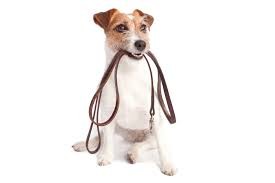
Darlene Arden
Darlene Arden, CABC, is a speaker and multi-published author of books on both canine and feline behavior, including the newly released, The Compete Cat’s Meow.
“Instead of a cervical (neck) collar, use a chest harness to prevent any pressure on your puppy’s trachea (windpipe).”
I wholeheartedly agree with Arden and greatly appreciate her goals for promoting safe training from the perspective of health. Besides the potential for harm to the trachea, there is also the potential for the esophagus, blood and lymphatic vessels, vertebrae, intervertebral discs, facets (small joints connecting the vertebrae), spinal cord, and muscles of the neck to be adversely affected by abrupt leash tugs on a cervical collar.
Andrea Arden
There is more than one Arden in the pet expert realm; Andrea Arden is a multi-certified dog trainer, author of Barron’s Dog Training Bible, and a familiar presence on Animal Planet shows, including Dogs 101.
“Invest in 5-10 durable, hollow, rubber toys that can be filled with your dog’s normal meals and special treats. These sorts of enrichment toys provide a much needed outlet for some of your pup’s mental and physical energy and will keep your puppy happily occupied ‘hunting’ for its food. This helps prevent an endless list of unwanted behaviors, such as inappropriate chewing and excessive barking.”
Laura Nativo
Laura Nativo starred in CBS’s Greatest American Dog, hosted the Game Show Network’s Dog Park Superstars, serves as creative director of Petsami, is a certified APDT dog trainer, and accompanies me on vigorous “business hikes” with our dogs (we are “so LA”).
“As soon as your veterinarian gives you the go-ahead, introduce your puppy to as many new environments, people, and other pets as possible. Many common behavioral issues like excessive barking, resource guarding, and fear and leash aggression stem from missed opportunities for puppy socialization. Puppies that are well-socialized and trained in a variety of settings have the best chance of growing into happy, confident and well-mannered adults. Make it a priority to socialize your dog every day, whether on a walk, hike, at the dog park, the local coffee shop, or in a puppy kindergarten class! Your dog will love it, and so will you!”
Greg Kleva
As the authoritative opinions of women seemingly dominate the animal-care fields, I’m compelled to share tips from “one of the guys.” Greg Kleva is the host of It’s A Dog’s Life on the Martha Stewart Radio , a Pet Travel Safety Ambassador for Toyota’s Pet Expert Team (P.E.T.), and a Grand Master Trainer for Bark Busters (NJ).
“Reduce your puppy’s boredom by providing plenty of mental stimulation. Simple training exercises and education is very tiring for a puppy’s brain. Make games out of training … keep session short and light, but test your puppy to think, think, think. Try ‘Follow the Leader’ exercises (to reinforce following/walking/heel), ‘Hide-n-Seek’ (to reinforce coming when called), and ‘Sit/Stay’ at feeding time. Be consistent, calm, and never use physical means to correct your dog.”
